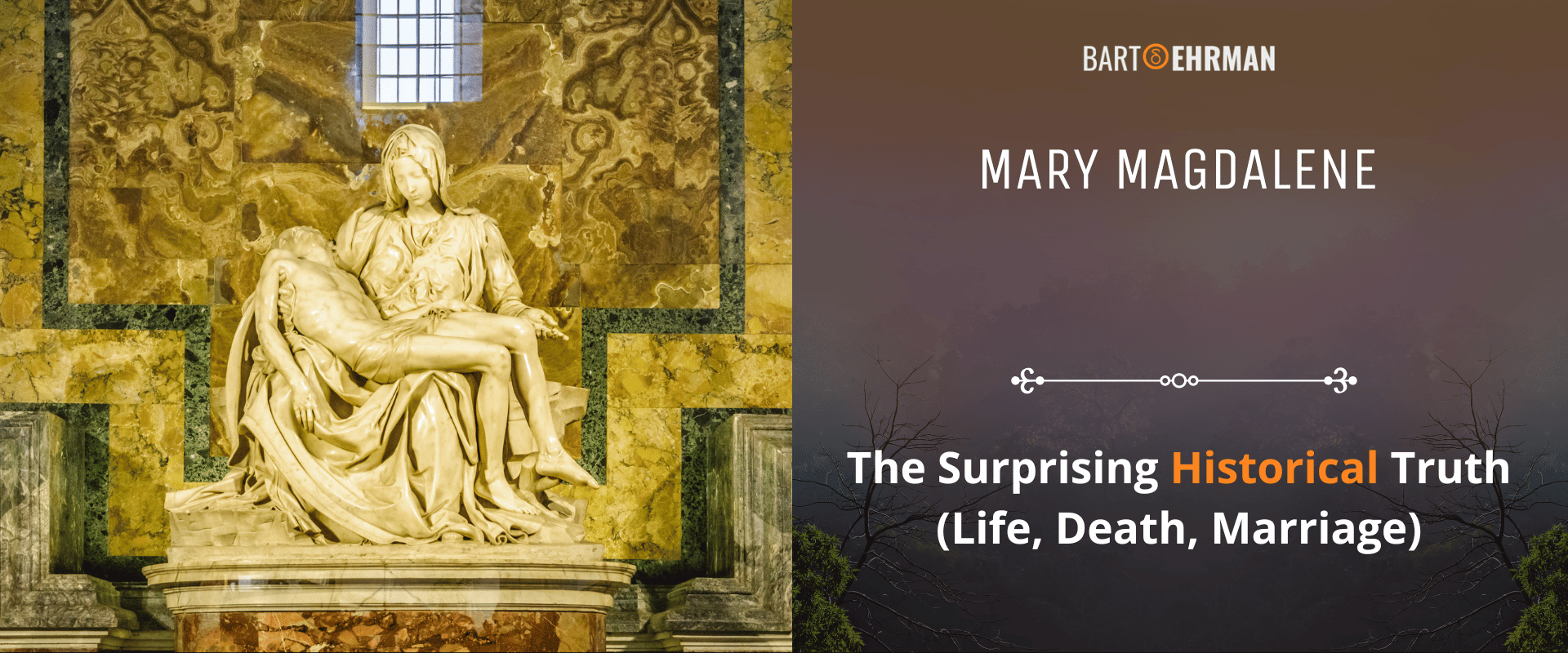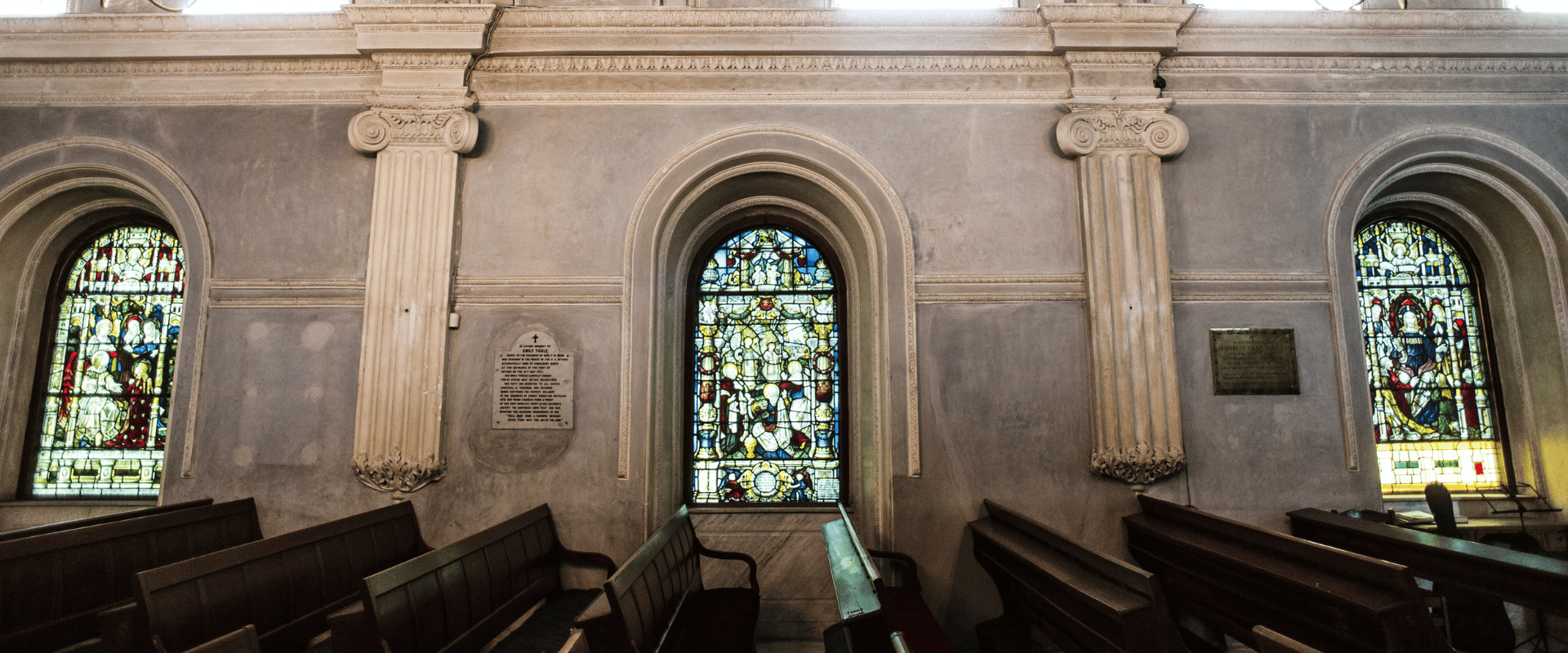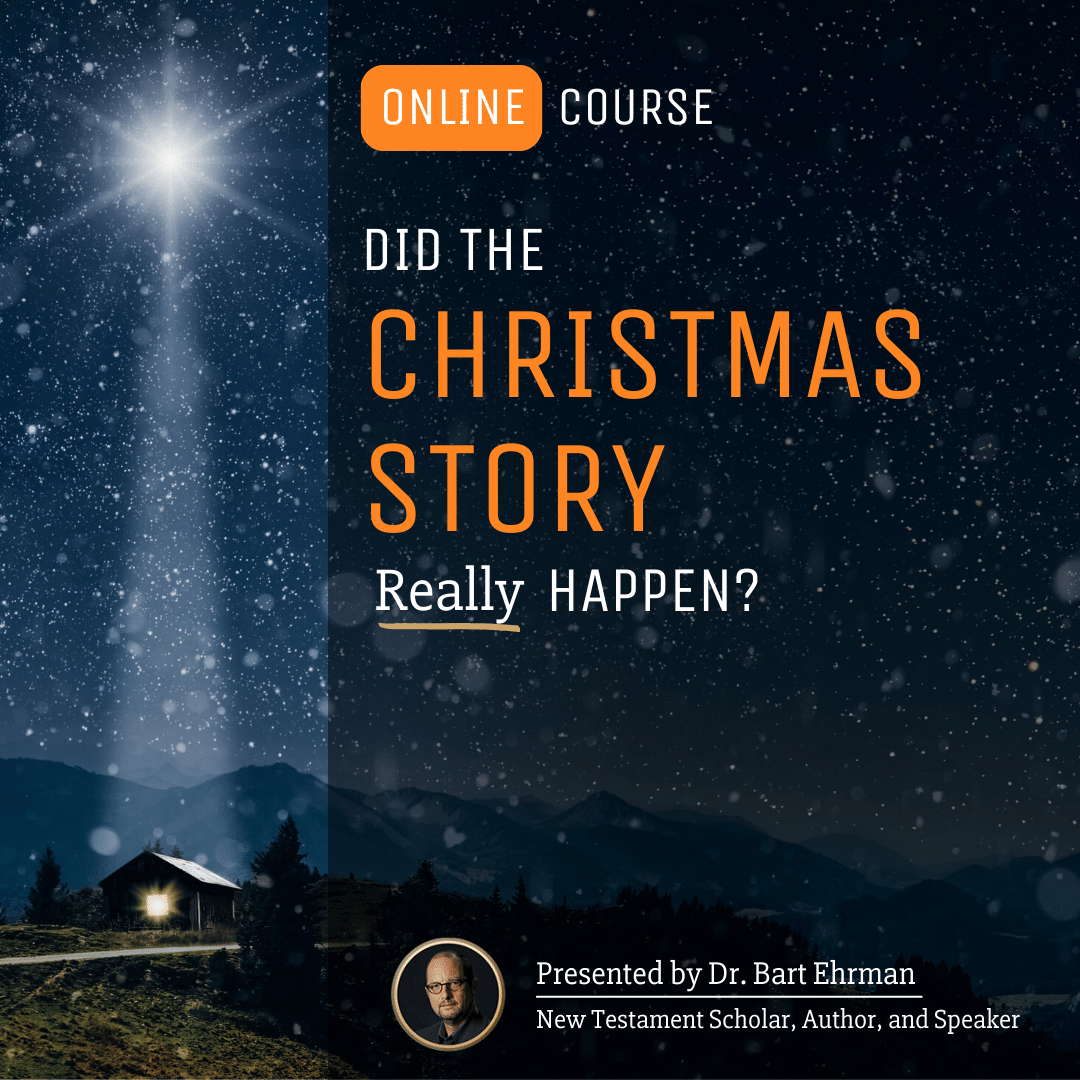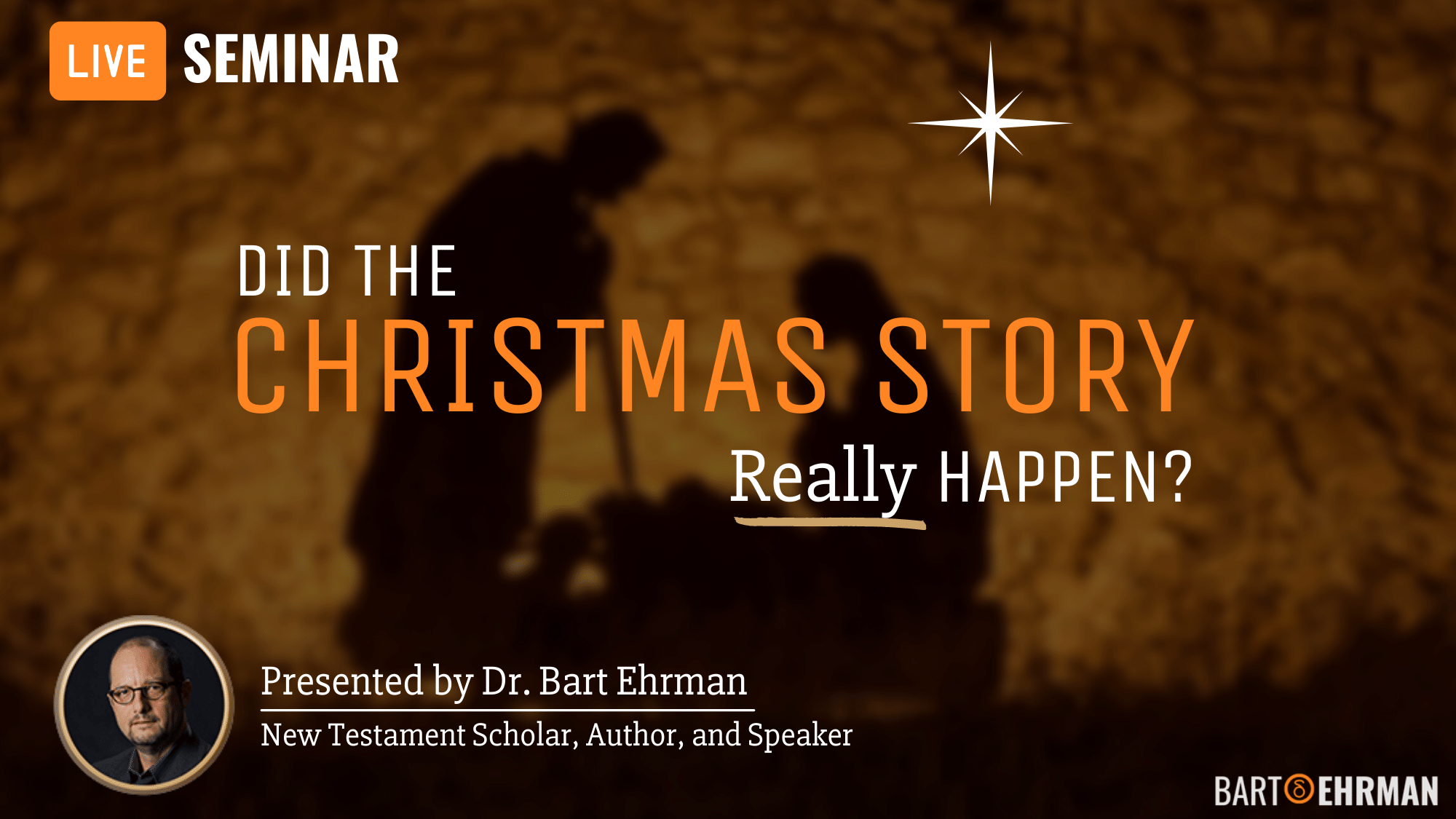Mary Magdalene: The Surprising Historical Truth (Life, Death, Marriage)

Written by Joshua Schachterle, Ph.D
Author | Professor | Scholar
Author | Professor | BE Contributor
Verified! See our editorial guidelines
Verified! See our guidelines
Date written: February 10th, 2024
Disclaimer: The views and opinions expressed in this article belong to the author and do not necessarily match my own. - Dr. Bart D. Ehrman
Dan Brown’s wildly successful 2003 novel The Da Vinci Code had some interesting things to say about the biblical figure Mary Magdalene. Among other things, it claimed that she was Jesus’ wife and that she bore his child. Are these claims historical? Can they be proven? If not, who was Mary Magdalene and what can we actually know about her?

What Does the New Testament Say About Mary?
Mary Magdalene is mentioned twelve times in the four canonical Gospels. This may not sound like a lot, but it’s more than some of the disciples are mentioned. This being the case, why was Mary Magdalene – not to be confused with Jesus’ mother Mary – so important for early Christians?
Let’s start with her name. The Greek word Magdalene is not a family name but merely means “one from Magdala”. Magdala was a small fishing village on the western shore of the Sea of Galilee. In other words, like Jesus and his disciples, Mary was from Galilee in northern Palestine. By the way, this also meant that like Jesus, her first language was Aramaic.
The Gospels, interestingly, don’t tell us a lot of information about Mary Magdalene, and what they do say is pretty fragmentary. Still, we can learn some important things about her from these references.
Luke 8:1-3 has this to say:
Soon afterward [Jesus] went on through one town and village after another, proclaiming and bringing the good news of the kingdom of God. The twelve were with him, as well as some women who had been cured of evil spirits and infirmities: Mary, called Magdalene, from whom seven demons had gone out, and Joanna, the wife of Herod’s steward Chuza, and Susanna, and many others, who ministered to them out of their own resources.
What do we learn about Mary from this passage? First, Luke says that Mary had been possessed by seven demons and, presumably, healed by Jesus. More importantly, it says that Mary and the other women mentioned supported Jesus and the disciples with “their own resources.” This means that Mary Magdalene was a wealthy woman who probably fed and otherwise sustained Jesus and the twelve.
While one of the women mentioned is the wife of King Herod’s steward, no husband is mentioned with Mary Magdalene. We can assume, then, that Mary either inherited wealth from her father or that she was a widow who inherited from her husband.
Most of the other Gospel references to Mary are related to Jesus’ crucifixion and/or resurrection. Matthew and John both say that Mary Magdalene, along with several other women, were present at Jesus’ crucifixion, indicating that she was a devoted follower of Jesus. Whether this was historically true or not, early traditions about Mary noted her devotion.
More significant, though, is her presence at Jesus’ resurrection. In fact, she is often said to be one of the first people to see the resurrected Jesus. Mark, our earliest written Gospel, has a strange ending involving Mary. In Mark 16, Mary Magdalene and another Mary go to anoint Jesus’ body in the tomb. When they arrive, they see a young man in the tomb which is otherwise empty. The young man tells them that Jesus has been raised and that they should go and tell the disciples. Their reaction?
So they went out and fled from the tomb, for terror and amazement had seized them, and they said nothing to anyone, for they were afraid.
This leads us to the obvious question: if they didn’t take the news to the disciples, who did? This question is resolved by a later version of Mark in which a different ending is added. In this ending, Jesus appears to Mary and she tells everyone about it.
In Luke, Mary Magdalene and other women encounter the empty tomb and are told by “two men in dazzling clothes” that Jesus has been raised. They go immediately to tell the disciples.
In Matthew, however, the women at the tomb experience an earthquake, after which they see the angels and then the resurrected Jesus himself. They go immediately and joyfully tell the disciples. A similar story happens in John.
What does all this tell us about how ancient Christians viewed Mary? If indeed Mary was believed to be among the first to see the resurrected Jesus, she must have been considered very important in the Jesus movement. In fact, Bart Ehrman points out that in a way, Mary Magdalene could be considered the first apostle since she is sent by Jesus to tell the good news to the disciples. This tradition developed in the Middle Ages in which Mary was given the title “Apostle to the Apostles.”
Now that we know what the New Testament says about her, let’s look at some myths about Mary Magdalene and how they developed.
Myth # 1: Mary Magdalene was a Prostitute
Scholar Carol Meyers notes that this myth got started in 591 CE when Pope Gregory I gave a sermon in which he mixed up Mary Magdalene with both Mary of Bethany and the unnamed sinful woman in Luke 7:36–50 who anoints Jesus’ feet. There is no evidence that those three women were the same person in the New Testament.
However, following this sermon, elaborate stories about Mary’s sinful years as a prostitute before meeting Jesus were written in the Middle Ages and many still believe this myth today.
Remember that the only thing the New Testament tells us about Mary’s life was that she had been freed from seven demons and that she supported Jesus with her wealth.
Myth # 2: Mary Magdalene was Jesus’ Wife
This myth mostly originated from non-canonical gospels written much later than the canonical Gospels. These gospels are often called “Gnostic,” a term which scholars now think is problematic since there were many groups under this umbrella which may or may not have had things in common. However, it is undeniable that Mary plays a suggestive part in several of the apocryphal gospels.
E.P. Sanders noted that very little in these apocryphal gospels could be traced back to the historical Jesus. However, they do sometimes make intimations about the relationship between Jesus and Mary Magdalene.
For example, the Gospel of Philip says this:
There were three who always walked with the Lord: Mary, his mother, and her sister, and Magdalene, who was called his companion. His sister, his mother and his companion were each a Mary.
Is “companion” here used in a romantic sense? While that interpretation would be understandable in the modern world, in the ancient world, such a companionship would have seemed scandalous were they not married. However, there is no denying the suggestive nature of another quote from the same gospel (the parts in brackets are actually guesses by scholars since those words are illegible in the original manuscript):
And the companion of the [savior was] Mary Magdalene. [Christ] loved Mary more than [all] the disciples, [and used to] kiss her [often] on the [–]. The rest of the disciples [were offended by it and expressed disapproval]. They said to him, “Why do you love her more than all of us?” The Savior answered and said to them, “Why do I not love you like her? When a blind man and one who sees are both together in darkness, they are no different from one another. When the light comes, then he who sees will see the light, and he who is blind will remain in darkness.”
There are two things to note about this passage. First, Ehrman notes that a kiss for the earliest Christians was merely a greeting rather than something romantic. It was given between people of the same sex as well as those of different sexes and called “the kiss of peace” in the New Testament.
Second, Ehrman also notes that in this passage, the kiss is used as a symbol of the passing of knowledge from Jesus to Mary. This becomes clear when we see the apocryphal gospel known as the Gospel of Mary.
In this Gospel, Mary Magdalene is viewed as the preeminent disciple, the one to whom Jesus gave secret teachings (this is a hallmark of gnostic thought). In this gospel, Peter says this to Mary:
"Sister we know that the Savior loved you more than the rest of woman. Tell us the words of the Savior which you remember which you know, but we do not, nor have we heard them". Mary answered and said, "What is hidden from you I will proclaim to you". And she began to speak to them these words: she said, "I saw the Lord in a vision and I said to Him, Lord I saw you today in a vision".
What both these gospels and others are saying is not that Jesus and Mary were married or even romantically involved. Rather, they’re arguing that Mary was an important follower of Jesus and therefore had important knowledge. This may have simply been an extrapolation from the idea of Jesus appearing first to Mary who then told the disciples.
The vast majority of scholars agree that Jesus and Mary Magdalene were not married.

Myth # 3: Mary Bore a Child with Jesus
This myth probably came out of the Middle Ages. Mary Ann Beavis notes that in the 13th century, a claim was made about the beliefs of the Cathars, heretics who were persecuted by the ruling Catholic Church. In An Exposure of the Albigensian and Waldensian Heresies written around 1213 CE, an author claimed that the Cathars believed that Jesus and Mary Magdalene were married. This may or may not have been true about the Cathars: Christian authors have long misrepresented the beliefs of people they consider heretics.
Then, in the 19th century, a French author named Léon Aubry wrote a book entitled Essay on the life of Jesus in which he said that after the crucifixion, Mary Magdalene and Lazarus, whom Jesus had raised from the dead, traveled to Provence, France where Mary gave birth to Jesus’ child and named him Maximin. 20th and 21st-century writers, including Dan Brown, have run with this idea ever since. There is no evidence to back up this claim, enticing as it might seem.
This myth developed long after the life of Mary Magdalene. Given the total lack of evidence, as well, there is little to no chance that Mary Magdalene had a child with Jesus.
Conclusion
Mary Magdalene was a real person, not just a character in a story. However, novels like the Da Vinci Code have ignored the historical evidence and the consensus of scholars to make sensationalist claims about her relationship with Jesus. So, what do scholars really know about her?
She may have undergone exorcism at Jesus’ hand. Luke says that she was freed from seven devils. After this, she clearly followed Jesus, possibly even travelling with him and the disciples. In addition, she was a woman of wealth, evidenced by the New Testament reference to her and other women who supported Jesus and the disciples from their own resources.
She was also considered very important to early Christians. How do we know? She is depicted as one of the first people to encounter both the empty tomb of Jesus and the risen Jesus himself. Whether or not this can be historically confirmed, it definitely means that she was seen as significant in the earliest Jesus movement.
Finally, several long-held myths about her don’t hold water. There is no evidence that she was a prostitute, a claim first uttered by a Pope in the 6th century and later developed in the Middle Ages. In addition, there is no evidence that she and Jesus were married. The apocryphal gospels that seem to show a romantic relationship between them are merely showing Mary’s importance in the movement. Finally, there is no evidence that she bore a child, with Jesus or anyone else.


